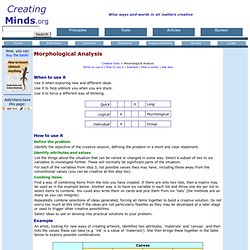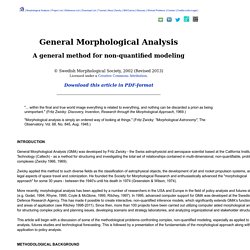

DesignVUE. What is designVUE?

DesignVUE is a branch of the Visual Understanding Environment (VUE) tool originally developed by Tufts University. It is an Open Source project based in the Design Engineering group of the Mechanical Engineering Department at Imperial College London. Selected for its aesthetics, usability and maturity, the application has been enhanced to provide support for a range of information processing activities including requirement capture and justification, design rationale capture, functional modelling and decision making. The tool is suitable for individual and collaborative design practice. New functionality includes support for the Issue-Based Information System (IBIS) notation and bi-directional hyperlinking between designVUE files.
With the new functionality it is possible to capture design thinking including issues, solutions and pros and cons while easily importing supporting evidence such as images, web-links, documentation and multimedia files. Download designVUE.
Related Work. Wicked Problems. Tools for defining the creative problem. Creative tools > Tools for defining the problem Defining the problem is the first step of solving a creative problem.

This is a very important stage, as changing the problem definition will change the solution. These tools help you to look at the problem in different ways and hence consider alternatives for the problem definition. Breakdown: Decomposing to find the area of optimal focus. CATWOE: A checklist for thinking about problems and solutions.
Morphological Analysis. Creative tools > Morphological Analysis When to use it | How to use it | Example | How it works | See also When to use it Use it when exploring new and different ideas.

Use it to help unblock you when you are stuck. Use it to force a different way of thinking. How to use it Define the problem Identify the objective of the creative session, defining the problem in a short and clear statement. Identify attributes and values List the things about the situation that can be varied or changed in some way. For each of the variables from step 3, list possible values they may have, including those away from the conventional values (you can be creative at this step too).
General Morphological Analysis. "... within the final and true world image everything is related to everything, and nothing can be discarded a priori as being unimportant.

" (Fritz Zwicky: Discovery, Invention, Research through the Morphological Approach, 1969.) "Morphological analysis is simply an ordered way of looking at things. " (Fritz Zwicky: "Morphological Astronomy", The Observatory. Vol. 68, No. 845, Aug. 1948.) General Morphological Analysis (GMA) was developed by Fritz Zwicky - the Swiss astrophysicist and aerospace scientist based at the California Institute of Technology (Caltech) - as a method for structuring and investigating the total set of relationships contained in multi-dimensional, non-quantifiable, problem complexes (Zwicky 1966, 1969).
Zwicky applied this method to such diverse fields as the classification of astrophysical objects, the development of jet and rocket propulsion systems, and the legal aspects of space travel and colonization. Figure 2: Energy Conversion Matrix (example) The Author: Dr.